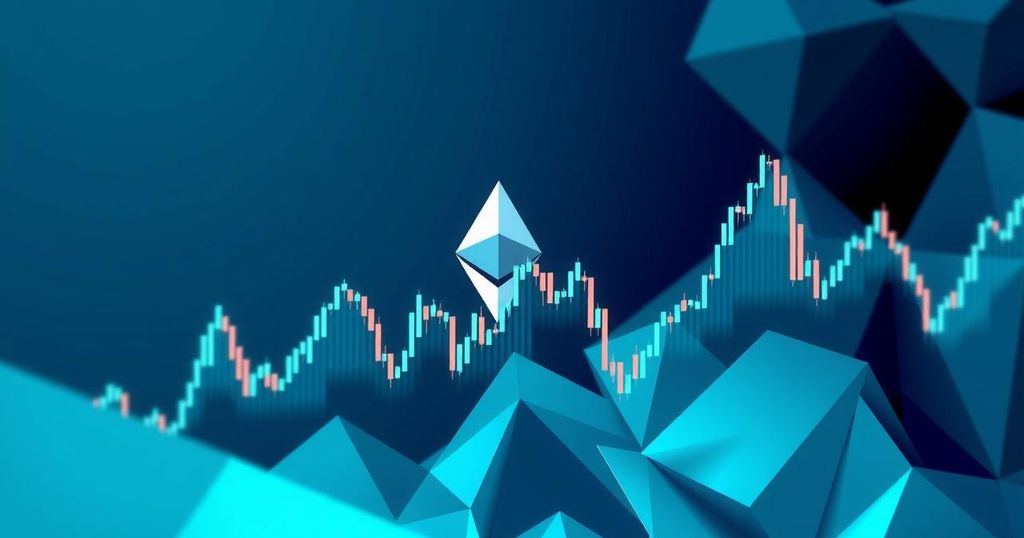Ethereum Price Decline: Whales Sell 143K ETH as Key Support Tested
Ethereum (ETH) price dipped below $1,600 as whale selling pressure increased, offloading over 143,000 ETH in a week. The crucial support level at $1,528.50 could trigger more volatility if breached. The Dencun upgrade improved scalability but reduced L1 fees, impacting ETH’s revenue model. Additionally, near-historic buying levels signal potential accumulation, yet market fatigue persists among traders, raising caution over buying strategies. Upcoming upgrades may address economic concerns, but uncertainty remains.
Ethereum (ETH) experienced a decline on Thursday, trading below $1,600 with a 1% decrease in the early Asian session. This dip was influenced by substantial unloading of ETH from whales, who sold over 143,000 ETH within a week. The increase in selling pressure arises amid mounting concerns about Ethereum’s ability to accrue value, particularly in light of the upcoming March 2024 Dencun upgrade.
Ali Martinez from IntoTheBlock highlighted that $1,528.50 represents a crucial support level for ETH, where approximately 2.61 million addresses have collectively acquired about 4.82 million ETH. If this support level is broken, it could lead to significant downside volatility in the market.
The Dencun upgrade has enhanced data availability on Layer-2 chains, improving scalability by 15.95x, according to Binance Research. However, this improvement has curtailed the fee accrual from Layer-1 (L1), thereby diminishing Ethereum’s utility as a revenue-generating asset. As Layer-2 networks now spend significantly less on Layer-1 settlements, Ethereum’s status as “ultrasound money” has weakened in comparison to competitors such as Solana and BNB Chain.
Proposals from some Ethereum developers advocate for increasing blob fees to boost L1 earnings. Nonetheless, Binance analysts caution that if blob costs rise significantly, Layer-2 networks may shift to cheaper options like Celestia or EigenLayer, further fragmenting the Ethereum ecosystem.
As ETH approaches its historically significant realised price—often indicating macro bottoms—market participants are vigilant. Historical analysis by Abramchart indicates that major bull cycles typically initiate near or below the lower Bollinger Band, which ETH seems to be nearing. A trend continuation could suggest strong accumulation opportunities, although a drop below this band may signify increased weakness.
Traders are expressing caution due to fatigue from unsuccessful buying attempts. IncomeSharks, a notable X account, shared a personal experience to emphasise the importance of profit-taking, cautioning against the common strategy of buying every dip. This sentiment reflects the broader market’s struggle with sustained momentum, as volumes on exchanges have declined and speculative interest has waned. Nonetheless, historical patterns advocate for patience and accumulation during price corrections, particularly around key levels like $1,528.
Ethereum continues to demonstrate superior network security with over 1 million validators, significantly outperforming Celestia and EigenDA. However, discussions regarding value accrual mechanisms are still unresolved. Binance Research has identified “based rollups” as potential solutions to enhance fee contributions. Yet, with upcoming upgrades not prioritising this model, delays in addressing current economic concerns remain a possibility.
The next major protocol upgrade for Ethereum is scheduled for May 7, followed by another in Q4. Whether these upgrades will resolve the current economic challenges is still uncertain. The confluence of Ethereum’s price movements, behavioural patterns on-chain, and underlying structural issues presents a crucial moment for stakeholders. The following weeks will be critical in determining if the $1,528 support can hold or if further declines will occur, marking a traditional buy area for long-term holders and indicating potential volatility for short-term traders.




Post Comment